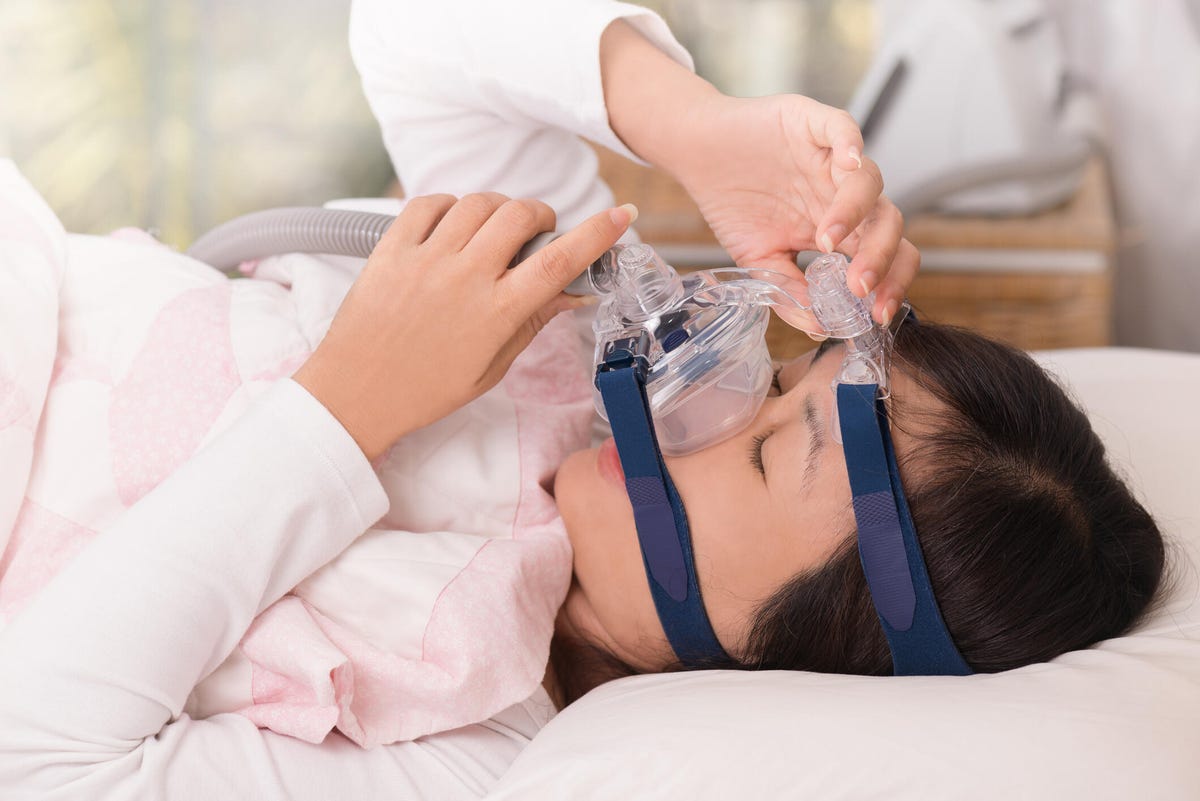[ad_1]
Sleeping with a CPAP machine can be annoying — the mask covering your face, the hose tethering you to a machine that grumbles beside your bed. We get it. Undeniably, they can be a hassle, and that’s a big reason why people opt to sleep without them. Up to 35% of people don’t use their prescribed CPAP machine as intended. Some people only use it for a few hours each night, while others disregard it entirely.

We don’t recommend doing that. Ignoring sleep apnea is serious as heart disease and high blood pressure. Instead of compromising your sleep quality and health, use these quick tips to make sleeping with a CPAP mask part of your routine.
1. Pick the right mask style
The good news is that CPAP machines have come a long way from the clunky old noise machine with a huge face mask. Newer models are very quiet, and there are various mask styles you can choose from. Modern CPAP machines offer mask variations that allow you to choose what works best for you.
Common CPAP mask styles:
- Full-face masks: This coverage option is what people expect from CPAP machines. It covers both your mouth and nose. It’s a good option for people with nasal congestion or those who breathe through their mouths at night.
- Nasal mask: This mask only covers your nose. It’s well suited for people who move around in their sleep.
- Nasal pillow mask: This mask has the smallest face covering — it sits across your upper lip and nostrils. This option is great for people who feel claustrophobic in full coverage options or wear glasses.
- Oral mask: This mask covers only your mouth and is best suited for people who breathe out of their mouth at night.
Keep in mind what position you sleep in when choosing the style of mask. If you sleep on your stomach or side, the larger masks with various straps may push against your pillow.
2. Make sure your mask fits properly
Once you know which mask style best fits your needs, you must ensure it fits. An ill-fitting mask is uncomfortable and can leave you with a dry, stuffy nose. If you notice red marks on your face, it’s too tight. On the other hand, you won’t get the benefits CPAP machines offer if the mask is too loose.
Make adjustments each night until you find the perfect fit. When you adjust your mask, you should do so while lying down with the mask on your face. If you are having trouble getting your mask to fit properly, your doctor will be able to help you adjust the mask accordingly.

Getty Images/cherrybeans
3. Practice wearing it during the day
When you first put on a CPAP mask, it can feel a bit like having a facehugger from Alien clamped to your face. It takes time to get used to. The last thing you want to do is save the adjustment period for when you are trying to fall asleep. Instead, start wearing it during the day so you get used to the sensation of being on your face. Wear it while you’re watching TV or reading a book. Soon enough, you won’t notice it at all.
If you find that you can’t tolerate wearing it during the day, try breaking it down into steps. Start with just the mask — no hose or straps. Then slowly attach the hose and straps to the process.
4. Use the ‘ramp’ feature
CPAP machines are designed to push air into your airways to keep them from collapsing from sleep apnea. For some people, the feeling of forced air is hard to tolerate, especially in the beginning. Many CPAP machines have a “ramp” feature that starts with lower air pressure as you fall asleep and increases through the night. Work with your doctor to find your prescribed optimal pressure for your sleep apnea.
5. Be patient
Getting used to sleeping with a CPAP machine is an ongoing process that you should measure in terms of small steps. No one brings home their brand-new CPAP machine and immediately sleeps eight uninterrupted hours with it on. CPAP machines can help you sleep better and ultimately improve your health in the long run. Despite the sometimes annoying CPAP struggles, you’ll feel more rested if you sleep with it.
The information contained in this article is for educational and informational purposes only and is not intended as health or medical advice. Always consult a physician or other qualified health provider regarding any questions you may have about a medical condition or health objectives.
[ad_2]
